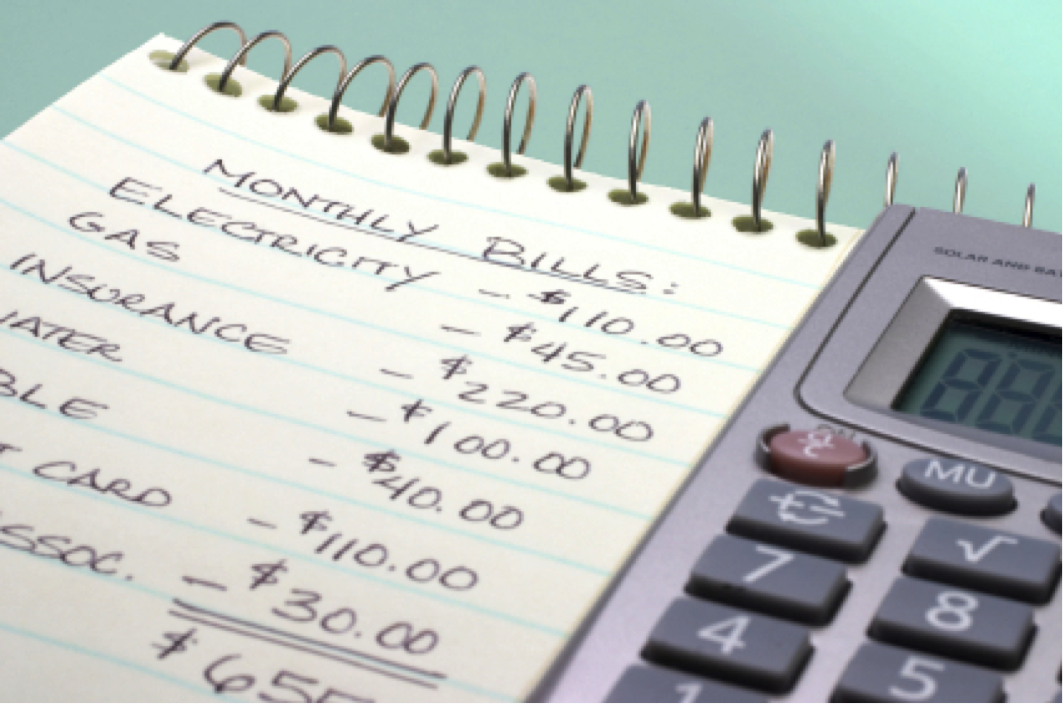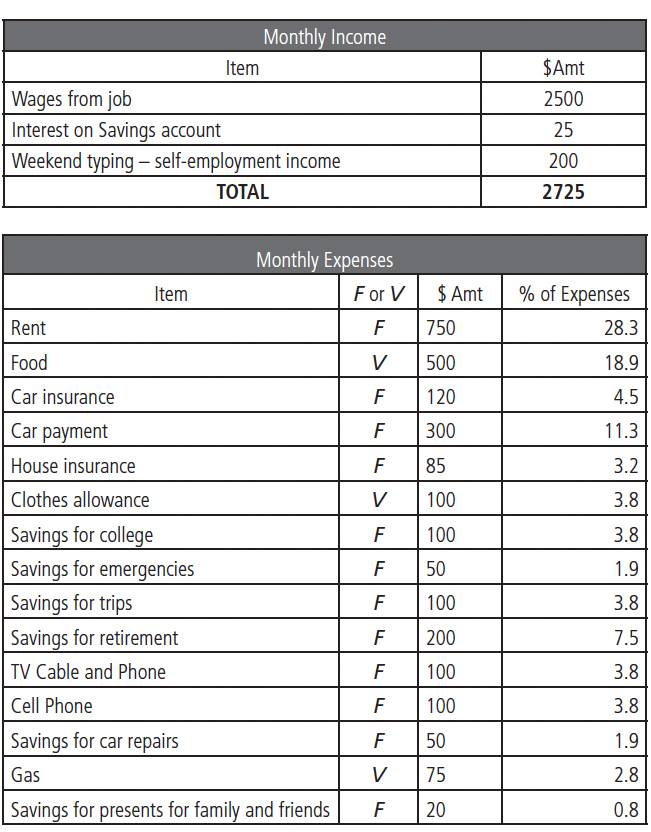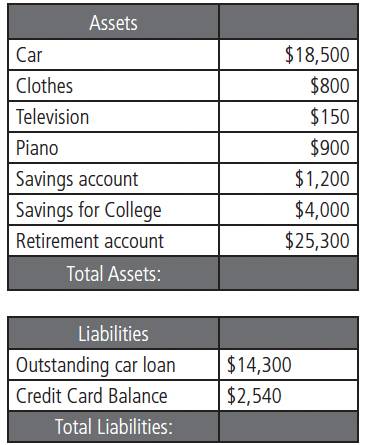Making Up a Personal Budget

In order to keep a good credit history, it is necessary to pay all bills on time. This can be a challenge because often people do not have enough money to buy everything that they want. And even if people have enough money at a given time, they might need money to pay future expenses, like a house or college. For example, on payday, Frank receives a monthly check of $2,500. Does he have enough money to buy a $500 iPad? To know this, Frank must look at his upcoming expenses and develop a plan for how he will use his income so that he doesn’t run out of money that he needs for essentials, such as food.
To answer any financial question, it is necessary to examine the parts of a family budget. First, start with income, both from wages and savings. Family members might also have other sources of income, for example presents from a birthday or miscellaneous income from a part-time job. Ask your parents if they can think of other income sources.
Next, consider the expenses that a family needs to plan for. First, there are probably mortgage payments for a house or monthly rent. Second, budget for food. Next might be car expenses, like monthly car payments, car and house insurance, emergency funds, savings for retirement, and local, state, and federal taxes. Your parents might also be saving money to send you to college, as well as for a vacation.
Some of these expenses are fixed expenses; they do not change each month. For example, rent is a fixed monthly expense. Other expenses are variable. A variable expense is the grocery bill. To figure variable expenses, just estimate the average amount figured from previous expenses. If the grocery bill totaled $120 in January, $150 in February, and $60 in March, then a good estimate of average monthly food expenses is (120 +150 + 60)/ 3 = 110.
EXAMPLE 1
Sally made a list of her monthly income and expenses in the two tables shown below.
- The rows in the expenses table labeled with "F" are fixed expenses, and the ones with "V" are variable expenses
- Sally's total monthly expenses is $2,650. We find this by summing up all her expenses.
- The "% of Expenses" column is determined by taking each expense row and dividing by the total expenses. For example, the percentage of expenses for clothes is 100/2650 = 0.0377, which is about 3.8%
- Sally's income is a little bit more than her monthly expenses. However, we would still need to estimate Sally's federal and state income taxes and see how much she would need to save to pay her income taxes.

When a person makes up a budget, the expenses will depend on the local situation. For example, if the person lives in a small city, the rent might be less than in a larger city. The family expenses also depend on several variables, like the number and age of the children, whether they need to go to day care, educational expenses if they are in school, and extracurricular expenses if they play music or sports.
PROBLEM 1
Mary’s family includes her father, mother, and two brothers aged 9 and 12. She lives in San Marcos, a small town in central Texas.
- Create a family budget, and estimate the minimum household budget to meet her family’s basic needs.
- Estimate the average hourly wage that Mary’s parents need to make, working 40 hours per week, to meet basic needs.
Mary has a friend, Victoria, who lives in San Antonio, a larger town south of San Marcos. She also has five members in her family: her father, mother, and two sisters aged 5 and 15.
- Create a family budget, and estimate the minimum household budget to meet her family’s basic needs.
- Estimate the average hourly wage that Victoria’s parents need to make, working\ 40 hours per week, to meet basic needs.
Now that you have an idea what a budget might look like, it’s time to look at the overall financial situation. To do this, look at all assets and liabilities. An asset is something owned, like a house. A liability is money owed, like a mortgage.
If a person’s house is worth $150,000 then she has an asset of $150,000. However, if she still owes $90,000 to the bank on the house, then her house is also a liability of $90,000. The net worth of the house, $150,000 − $90,000, is $60,000. Although the house is a $150,000 asset, the person really owns only $60,000 of the value of the house. The remaining $90,000 is considered a liability.
EXAMPLE 2
Sally from Example 1 made the following list of all her assets and liabilities. We can compute her net worth by summing up her total assets and subtracting out her total liabilities:
Net Worth = Total Assets - Total Liabilities
Total Assets = 18500+800+150+900+1200+4000+25300 = 50850
Total Liabilities = 14300+2540 = 16840
Net Worth = 50850 - 16840 = 34010

Exercises
-
1. Make a list of items that might be part of a personal budget. List at least three possible sources of income and ten different expenses that need to be budgeted.
Sample solution:
Income: monthly salary, birthday present money, rebate
Expenses: groceries, rent, gas for car, clothes, movie ticket (entertainment), visit to the doctor, donation to charitable cause, medical insurance, buying a birthday present for someone, car maintenance costs -
2. Total the income and expenses from #1. Calculate the percentage of the total budget in each category.
Answers will vary here based on your response to #1 above
-
3. List ten examples of assets a family might own. List ten examples of liabilities a family might have. Calculate the net worth of the family.
Answers will vary.
Remember that Net Worth = Total Assets - Total Liabilities. -
4. According to www.LivingWage.mit.edu, the average annual expense for a four-person family in Texas is about $56,318. Assume that there are 2,087 work hours in a year. Suppose that this family has one parent that is the primary income earner. What is the average hourly wage this parent would have to make to cover the family's expenses?
56,318/2087 = 26.98
The parent would have to have a job that pays about $26.98 per hour in order to cover the family's annual expenses.
